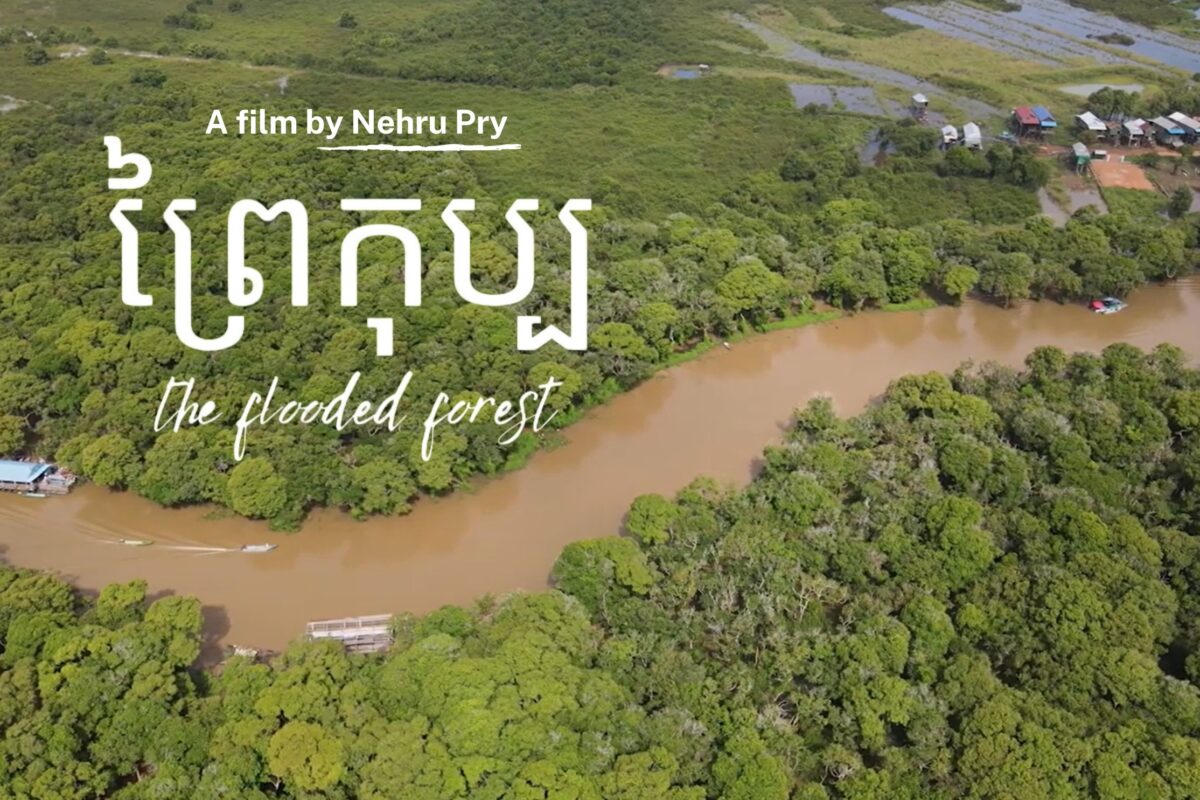SIEM REAP, CAMBODIA – A new documentary by a Cambodian filmmaker shows breathtaking scenes of the flooded forest around the Tonle Sap Lake, a huge area which sustains a water-based culture and ecosystems that local people depend on.
Water is at the heart of the celebration of Khmer New Year, which runs from April 13 to 16 this year, similar to Myanmar, Laos and Thailand, where this major holiday is also celebrated at the same time.
Important traditions include bathing Buddha statues and showing respect to elders by gently pouring water over their palms – an act believed to bless them with healthy and happy lives.

The festival is a major annual celebration in Cambodia, when people splash water on each other to cool down during the peak of the summer heat.
The origin of this water-based culture reflects the abundant water resources in the Mekong region, where people have been sustained by various rivers and their tributaries.
The Tonle Sap Lake, the largest freshwater lake in Southeast Asia, is one of the major water sources in the region where water-related traditions have been preserved. The lake has provided food and incomes to the people who live on or near it, and provided habitats for many endangered plants and species.
In the documentary The Flooded Forest, Cambodian filmmaker Nehru Pry showcases the stunning scenery of the 650,000-hectare flooded forest in the Tonle Sap Lake, where half-submerged trees grow in water during the wet season and endure dry conditions in the summer.
This reflects the unique ‘flood pulse’ ecosystem of the Tonle Sap River, where water from the Mekong River floods into the river, which forms a huge lake upstream during the wet season and recedes during the dry season.
The Tonle Sap River is one of the few rivers in the world where the water flow changes direction with the seasons.
In the wet season, water flows up the river and into the lake and expands it, but in the dry season the water flows out of the lake and in the opposite direction in the river, back to where it joins the Mekong River at Phnom Penh.
However, this ecosystem has recently been threatened by various factors, including deforestation, infrastructure development and climate change, which have altered the water flow and impacted both the ecosystem and the people who rely on it.
The beautiful scenery in this documentary shows a need for the preservation of the forest and the water that sustains it. With a healthy environment, this water-based culture and the identity of the people are likely to endure.
Watch the film here:
Our Mekong, Our Say is a one-year project run by the Internews’ Earth Journalism Network. It supported more than 25 professional and citizen journalists in the lower Mekong region to produce films and stories that reflect the environmental challenges and people’s resilience in protecting natural resources.





